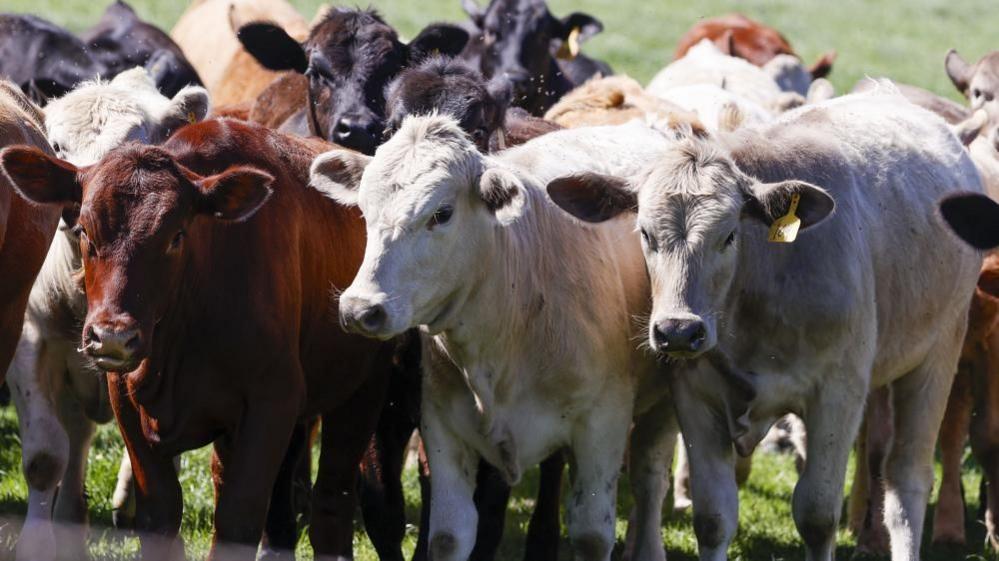Second US worker infected with cow-linked bird flu

- Published
A second human case of bird flu has been found as an outbreak spreads among birds and cows in the US.
The patient works on a Michigan dairy farm and had regular exposure to livestock infected with the H5N1 virus, according to authorities.
The first case, in Texas, was found in a farm worker less than two months ago. Both patients had only mild symptoms and have recovered.
The US Centers for Disease Control and Prevention (CDC) said the risk to the general public remained low.
As in the Texas case, the Michigan patient had only eye symptoms, the CDC said, adding that conjunctivitis is typical in humans infected with avian flu viruses.
The infection was confirmed via a a sample taken from the person's eye. A specimen taken from their respiratory tract tested negative.
This was "in a sense, reassuring", said a CDC official at a briefing on Wednesday, as it suggested a reduced likelihood of the virus spreading through respiration.
Cows in the US have bird flu - is it inching closer to humans?
- Published22 May 2024
Despite its name, the virus is not limited to birds, and in recent months has been detected in cows in several states. While avian flu is often fatal in poultry, it has been less lethal for cattle.
The virus does not normally spread to people, but human infections have occurred in rare cases around the world. The Texas case occurred earlier in the spring, amid the present American outbreak.
Prior to that, the first human case of H5N1 bird flu in the US occurred in 2022 in Colorado.
State authorities in Michigan have urged farm workers exposed to impacted animals to report even mild symptoms.
More human cases could be found, said the CDC, citing "high levels" of H5N1 virus currently in raw milk and circulating among cows.
The risk to the general public remained low if human infections remained "sporadic" without person-to-person spread, it added.
The CDC said the infection risk was greater for people with prolonged contact with infected birds or animals, or environments in which they have lived.
It advises to limit exposure to sick or dead animals and their faeces, bedding (litter), unpasteurised milk, or anything they have touched or been close to.
The agency has separate guidance, external for groups including poultry and livestock farmers, including on personal protective equipment (PPE).